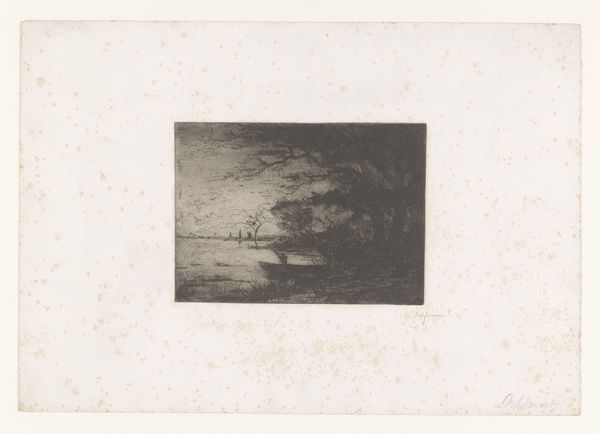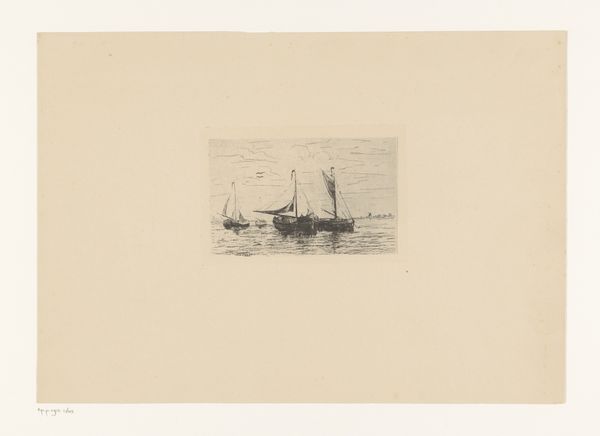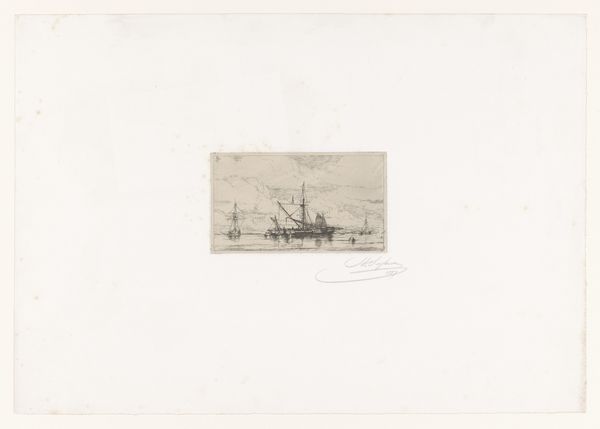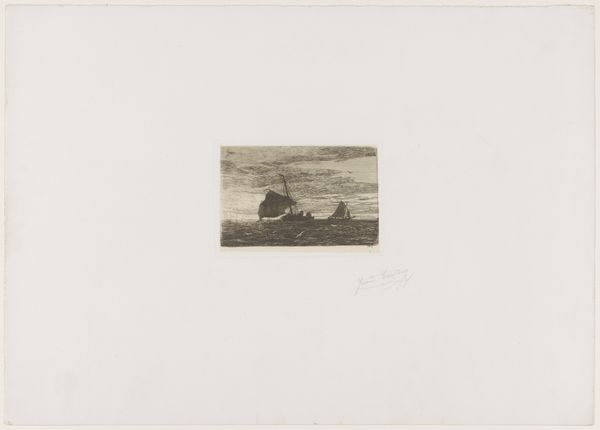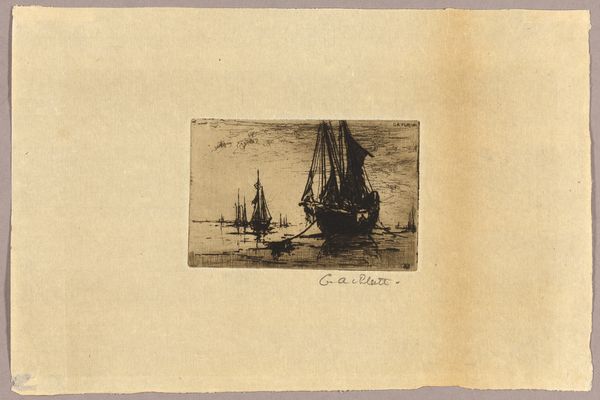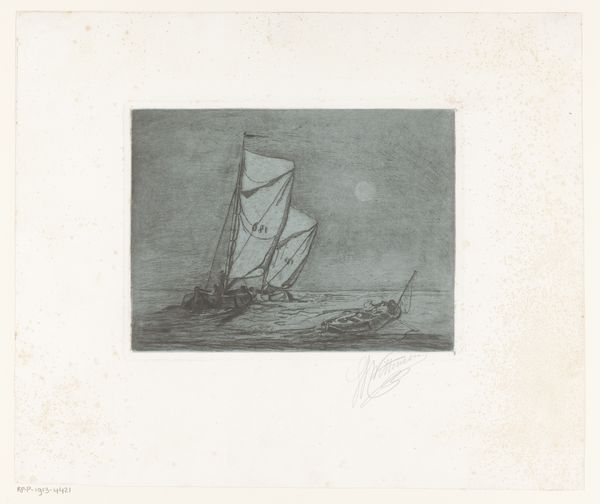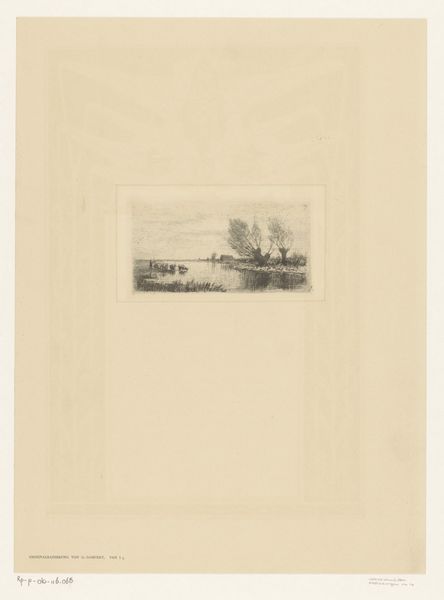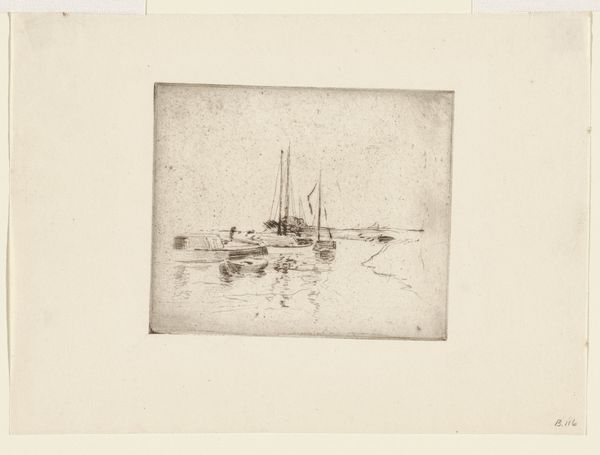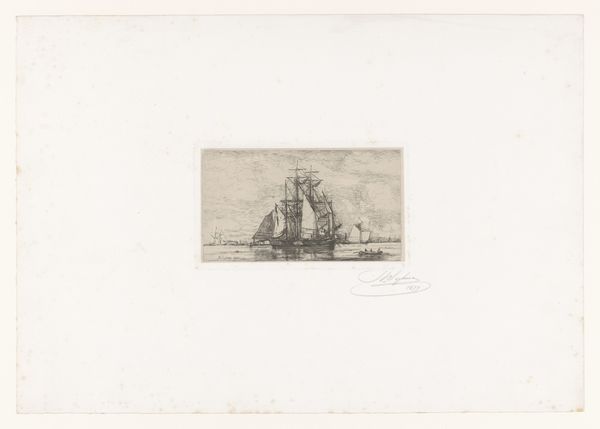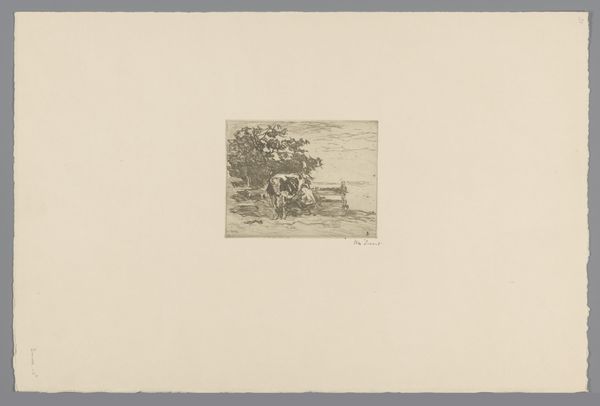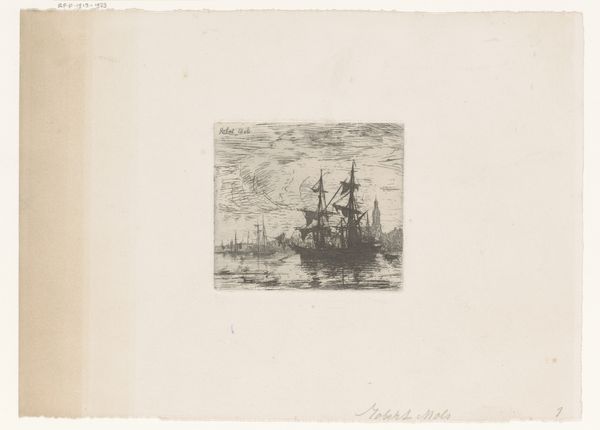
print, etching, ink
#
ink paper printed
# print
#
etching
#
landscape
#
ink
#
genre-painting
Dimensions: height 112 mm, width 172 mm
Copyright: Rijks Museum: Open Domain
Curator: Here we have Ludovic-Napoleon Lepic’s etching, "Schaapherder met kudde op een vlakte," or "Shepherd with Flock on a Plain," created in 1862. It’s a fascinating snapshot of rural life, rendered with such delicate detail using ink on printed paper. Editor: My immediate impression is one of vastness. Despite the small scale, I sense an enormous, almost existential loneliness in this shepherd and his flock set against the seemingly endless landscape. It feels almost allegorical. Curator: Absolutely. Lepic's work, though often genre-based, subtly reflected the anxieties of his time. Remember, he was deeply involved in the artistic and political debates swirling around Napoleon III's regime. A scene of rustic tranquility can also be seen as commenting on societal changes and the romanticizing of rural life in an industrializing France. Editor: I'm particularly drawn to the shepherd's posture, almost as if he’s a watchman. Is he guarding his flock, or perhaps contemplating his place in this expansive world? Sheep, historically, often symbolize guidance, safety and belonging. But this flock appears stranded. Is Lepic suggesting something about faith or direction at this point in time? Curator: It’s a crucial point to consider. Genre paintings of this era often played with notions of nostalgia and order but could also be imbued with subtle critique. Lepic was not just documenting rural life. He was carefully constructing a narrative. The distribution and reception of printed art like this speaks volumes about the tastes and anxieties of the middle classes during this period. It's less about strict realism, more about cultural commentary. Editor: Indeed. And the flatness of the landscape, heightened by the etching technique, seems to emphasize the shepherd's solitude. It's stark and profound, echoing the psychological isolation that comes with immense open space. The symbols of hope and belief seem diminished. Curator: Considering Lepic’s own aristocratic background and his position within the French art world, it's reasonable to examine how his art positioned itself within contemporary dialogues regarding class, landscape, and identity. A simple shepherd scene becomes a layered cultural artifact. Editor: Thinking about how people found significance and symbolic weight in simple things is central to unpacking our place in society. The lone figure carries so much human projection, hope, anxiety, and reflection of the natural world. Curator: Absolutely, and seeing how Lepic utilizes something as unassuming as a pastoral image to participate in grand narratives and debates on belonging within rapidly changing cultural and political spheres makes for an illuminating journey.
Comments
No comments
Be the first to comment and join the conversation on the ultimate creative platform.
